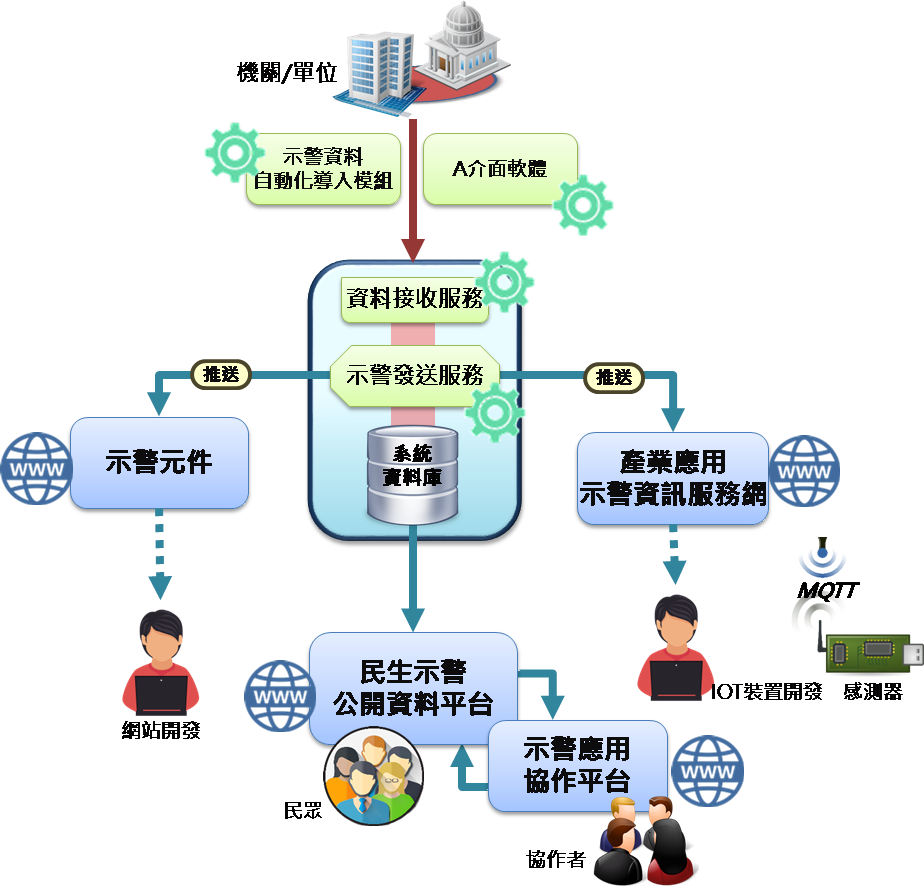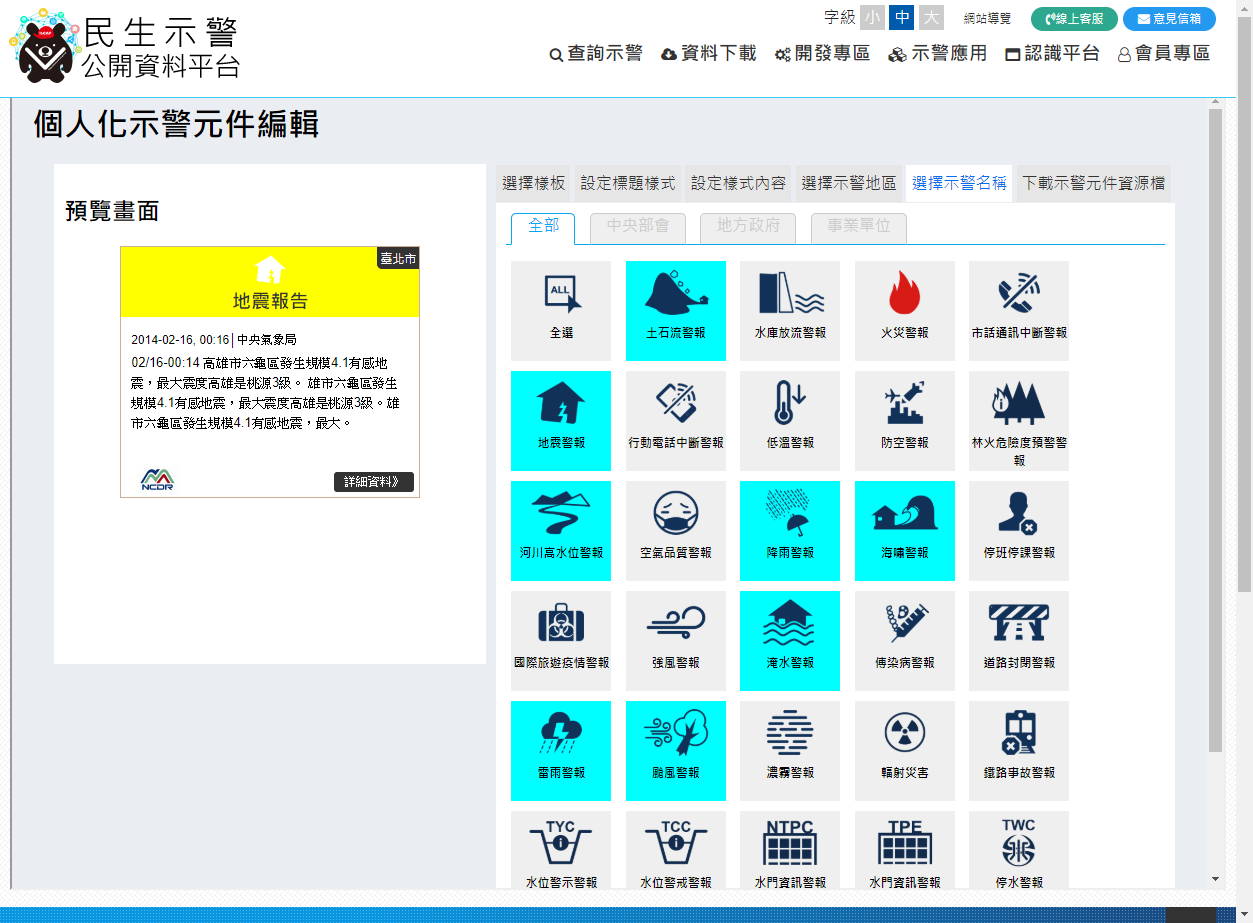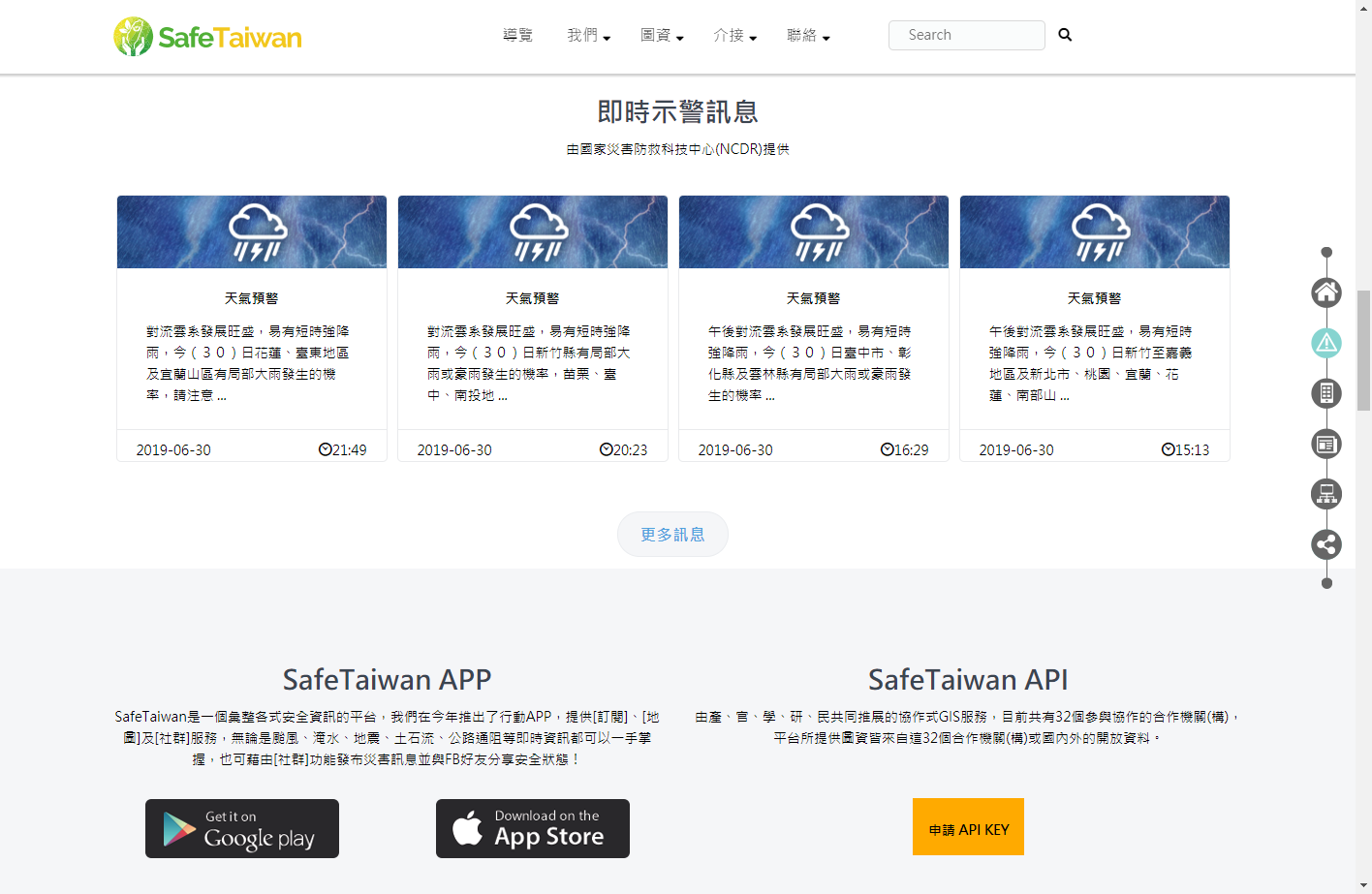Introduction
In order to respond to the policy of government departments to provide Open Data, the National Science and Technology Center for Disaster Reduction promotes the circulation and application of people's livelihood warning data, promotes the standardization of relevant warning information through the Common Alerting Protocol (CAP), and establish a "Public Information Platform for People's Livelihood Warning".
Collect the livelihood warning data provided by various government agencies, public institutions, enterprises, academic research and other units, and provide public openness and free value-added use in the form of government open data, to achieve the purpose of people's livelihood and disaster risk management, and exert the value of data, provide the channel for people's first-line livelihood and disaster information.

Project performance and benefits
The "Public Information Platform for People's Livelihood Warning" aims to promote the circulation and application of government disaster and people's livelihood warning information, following the CAP V.1.2 (July, 2010) specification formulated by the international OASIS (Advancing open standards for the information society) organization, the CAP standard is established to formulate a unified data standard format for public disaster and people's livelihood warning information.
Currently, 43 disasters and people's livelihood warnings such as typhoon, earthquake, flooding, landslides, infectious diseases, blood stocks, etc. real-time information released by 28 institutions of industry, government, academia, and research have been widely collected. Push information to subscribers and applications through message integration and distribution. Data applications can access warning information through Atom Feed, JSON, Web API or E-mail, HTTP, Atom data push, etc., and can edit through customizable "alarm components" the template adds value to the application of the warning information according to the requirements of the application side.
In order to provide the public with a convenient warning information subscription service and develop LINE warning broadcast service, the public can subscribe to the LINE official account of the National Disaster Prevention and Rescue Technology Center according to the administrative district, county, city or warning type, and then receive warning messages through LINE.
In addition, the warning message concept of the MQTT protocol standard is proposed and the MQTT subscription channel is provided for IoT device developers to integrate and apply.





